Colleen

Brief Synopsis
Cast & Crew
Alfred E. Green
Dick Powell
Ruby Keeler
Jack Oakie
Joan Blondell
Hugh Herbert
Film Details
Technical Specs

Synopsis
To the horror of his family, eccentric businessman Cedric Ames, influenced by his new assistant Joe Cork, buys a dress shop for Minnie Hawkins, a former candy dipper and current gold digger. Cedric's nephew, Donald Ames, 3rd, the real head of the business, steps in to straighten out the mess. Colleen Reilly has been keeping the books at the dress shop and at first she is upset that Donald wants to close it down, especially when newspaper headlines about the purchase draw curious women into the shop. Colleen stages an elaborate fashion show to stimulate business and even designs some of the dresses herself. She begs Donald to keep the shop open, convinced that she can show a profit shortly. When Donald asks her to dinner to discuss plans, she agrees, although she has to tell him that she is engaged to Joe. Abandoned, Joe asks Minnie to dinner. The two hatch a plan to get Cedric to adopt Minnie, after which Joe will marry her. Cedric's wife Alicia is horrified by this plan and forces Donald to close the shop. Meanwhile, Donald has fallen in love with Colleen and she with him. Minnie and Joe are fired, and against Donald's orders, Colleen is fired also. Colleen mistakenly thinks that Donald has been toying with her, so when he phones to ask her to marry him, she hangs up. Brokenhearted, she decides to accept an offer to open a dress shop on board an ocean liner. The ship turns out to be the very one on which Donald is accompanying Cedric and Alicia. Donald and Colleen make up, he proposes, and Colleen accepts.

Director
Alfred E. Green
Cast

Dick Powell

Ruby Keeler

Jack Oakie

Joan Blondell
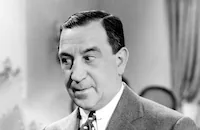
Hugh Herbert

Louise Fazenda
Paul Draper

Marie Wilson
Luis Alberni
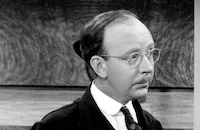
Hobart Cavanaugh
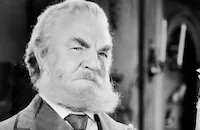
Berton Churchill

J. M. Kerrigan

Addison Richards
Charles Coleman
Spencer Charters

Andre Beranger
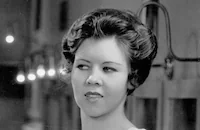
Mary Treen
Colleen Coleman
Herbert Evans
Viola Lowry
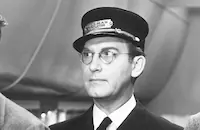
Emmett Vogan
Cyril Ring
Harry Depp
Bob Murphy

Ward Bond
Alma Lloyd
Sarah Edwards
Laura Pierpont
John Albright
Alphonse Martell
Andre Cheron
Iris March
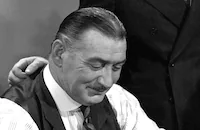
Edward Keane

Pauline Garon
Antonio Filauri
Charles E. Delaney
Shirley Lloyd
Crew
Bobby Connolly
Paul Draper
Al Dubin
Leo F. Forbstein
Byron Haskin
Ray Heindorf
F. Hugh Herbert
Sig. Herzig
Robert Lord
Peter Milne
Terry Morse
Orry-kelly
Max Parker
Sol Polito
Jack Sullivan
Jack L. Warner
Harry Warren

Film Details
Technical Specs

Articles
Colleen
Colleen was based on an original story by Robert Lord, with a screenplay by Peter Milne, F. Hugh Herbert (not to be confused with the actor Hugh Herbert) and Sig Herzig; it was directed by Alfred Green with Bobby Connolly directing the dance sequences. Cedric Ames (Hugh Herbert), an eccentric dress shop owner, gets into trouble when he hires a scheming con man (Jack Oakie) and falls for a gold digger who loves fashion (Joan Blondell). His nephew, Donald (Powell) decides to shut down the store to save his uncle's finances, but falls in love with the bookkeeper, Colleen (Keeler). Famous tap dancer Paul Draper who choreographed some of the numbers, also dances in the film with Keeler. Warners was looking to build up Draper, but as Jeanine Basinger wrote in The Star Machine, "Draper was extremely handsome, much better looking in the conventional sense than Fred Astaire and he certainly could dance. But Draper had no personality on film. He was dropped into the star machine and it spat him back out." Draper's career would suffer another hit when he was branded a "Communist sympathizer" by the House Un-American Activities Committee.
Ruby Keeler might have won Dick Powell on-screen, but off-screen, he was in love with Joan Blondell. Blondell had just divorced cameraman George Barnes and dropped the thirteen pounds of excess weight she'd put on during the proceedings. Powell had also ended an early marriage back in Little Rock, Arkansas and with both of them now single, the two co-workers became more than friends. They would marry the following year and divorce in 1945. Powell and Blondell were not the only members of the Colleen cast headed for the altar; Jack Oakie exchanged vows on board a train with former Ziegfeld Follies showgirl and Afghan hound breeder Venita Varden later in 1936.
Colleen went into production on the Warner Bros lot on November 5, 1935. A visitor to the set was actor Joe E. Brown, a good friend of Oakie's and just about everyone else in Hollywood. With him was baseball star, Dizzy Dean, whom he was showing around town and around the studio lot. When later asked by Dick Powell what he thought of the scene he'd just watched being filmed, Dean replied, "What's so tough about lettin' 'em take your picture while you're kissin' Ruby Keeler?"
Colleen was released in 1936, when musicals were fading and audiences were starting to prefer other types of films and so were the critics. The Motion Picture Herald was harsh, "Dick Powell: A few more like this will kill this star. They are falling down on musicals. A few more like Footlight Parade (1933) would pep them up." The Commonweal complained that " Colleen is dressed up in the glitter and gold of Hollywood musicals, but even the ordinarily popular entertainers Dick Powell, Joan Blondell, Jack Oakie, Ruby Keeler and Hugh Herbert appear not to give a tinker's dam." Frank Nugent of the New York Times, noted that the formula of the Warner Bros musicals was wearing thin, comparing the film unfavorably with the Fred Astaire-Ginger Rogers musicals, "Out of long experience, the Brothers have become proficient mixers and, by and large, their formula has been successful. Equal parts of Ruby Keeler and Dick Powell for romance, Hugh Herbert and Joan Blondell for comedy, Bobby Connolly's dance spectacles to dazzle the eye, Dubin and Warren's music to hum as you leave the theatre. Same old story, same old overhead shots, same expanding screen to accommodate the overflow of the colossal numbers. It all adds up to a Gold Diggers of 1933, 4 or 5, or -- as at the Strand this week -- to Colleen. All of this may sound pretty discouraging, even to a confirmed Warner musical addict, but it still is a relative opinion and should not be considered any more serious a reflection on Colleen than our admission that we prefer one ballroom dance by Ginger Rogers and Fred Astaire to a whole program by Miss Keeler and Mr. Powell. It is purely a personal reaction and, if you happen to like the Keeler-Powell musicals, you probably will find this one entirely satisfying. Its resemblance to last year's and the year's before that is unquestionable...Our final word, and it pains us to say it, is that we are giving up Dick Powell for Lent."
Producers: Hal B. Wallis, Jack L. Warner (uncredited)
Director: Alfred E. Green
Screenplay: Peter Milne, F. Hugh Herbert, Sig. Herzig; Robert Lord (story)
Cinematography: Byron Haskin, Sol Polito
Art Direction: Max Parker
Music: Heinz Roemheld (uncredited)
Film Editing: Terry Morse
Cast: Dick Powell (Donald Ames 3rd), Ruby Keeler (Colleen Reilly), Jack Oakie (Joe Cork), Joan Blondell (Minnie Hawkins), Hugh Herbert (Uncle Cedric Ames), Louise Fazenda (Aunt Alicia Ames), Paul Draper (Paul Gordon), Marie Wilson (Mabel), Luis Alberni (Carlo), Hobart Cavanaugh (Noggin).
BW-90m.
by Lorraine LoBianco
SOURCES:
Basinger, Jeanine The Star Machine
"Colleen" The Commonweal March 1936
Gay, Timothy M. Satch, Dizzy & Rapid Robert: The Wild Saga of Interracial Baseball Before Jackie Robinson
The Internet Movie Database
Kennedy, Matthew Joan Blondell: A Life Between Takes
Marlow-Trump, Nancy, Ruby Keeler: A Photographic Biography
"Colleen" The Motion Picture Herald 1937
Nugent, Frank "Colleen, the Latest Warner Musical Film, at the Strand", New York Times 9 Mar 36

Colleen
Quotes
Trivia
Notes
The original running time when screened by Motion Picture Herald was 100 min. It was cut to 89 min. prior to general release. Variety erroneously credits George Barnes with the cinematography. Hollywood Reporter is the only source to include the song "Summer Night" in the credits. This was the last film pairing of Ruby Keeler and Dick Powell.
















